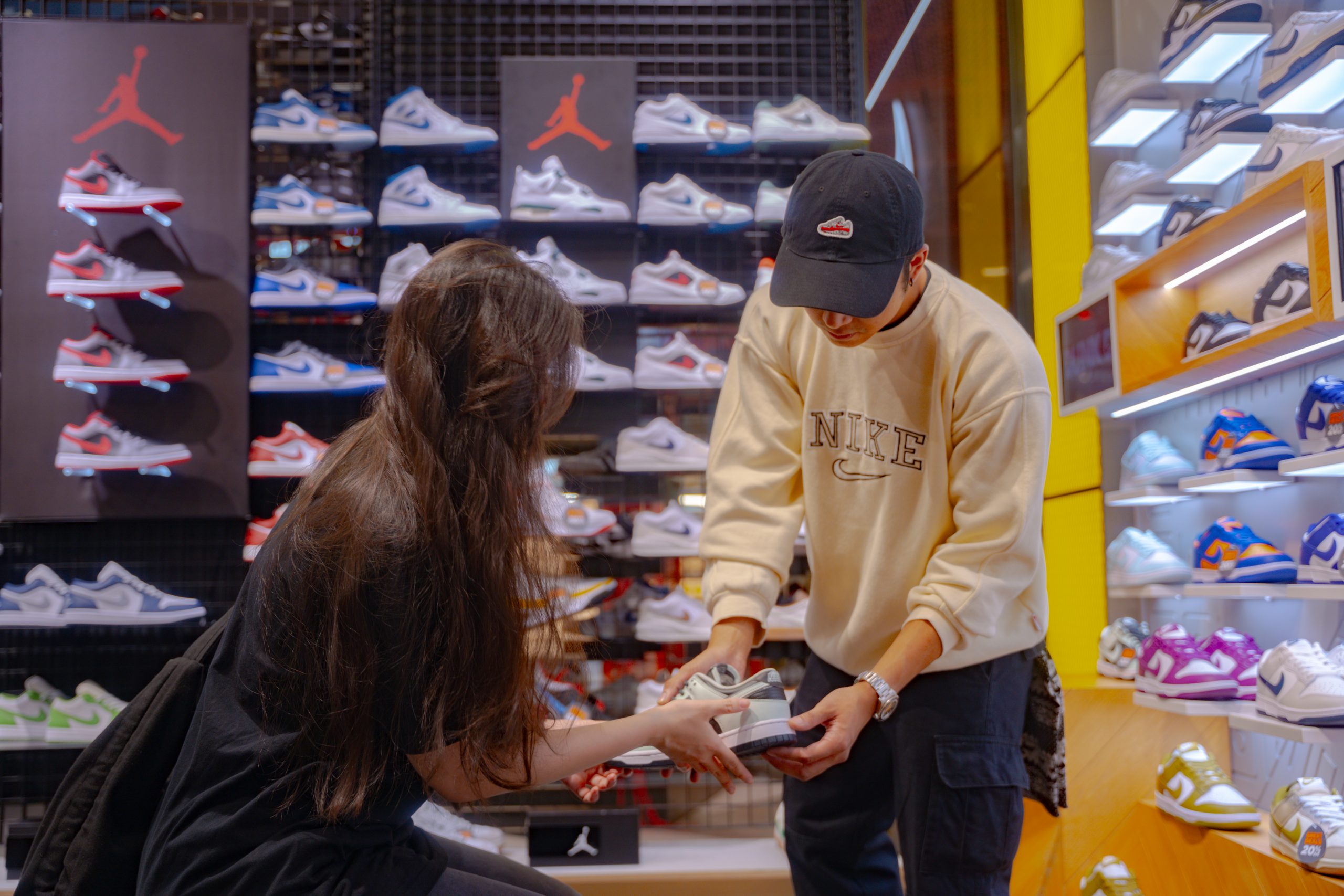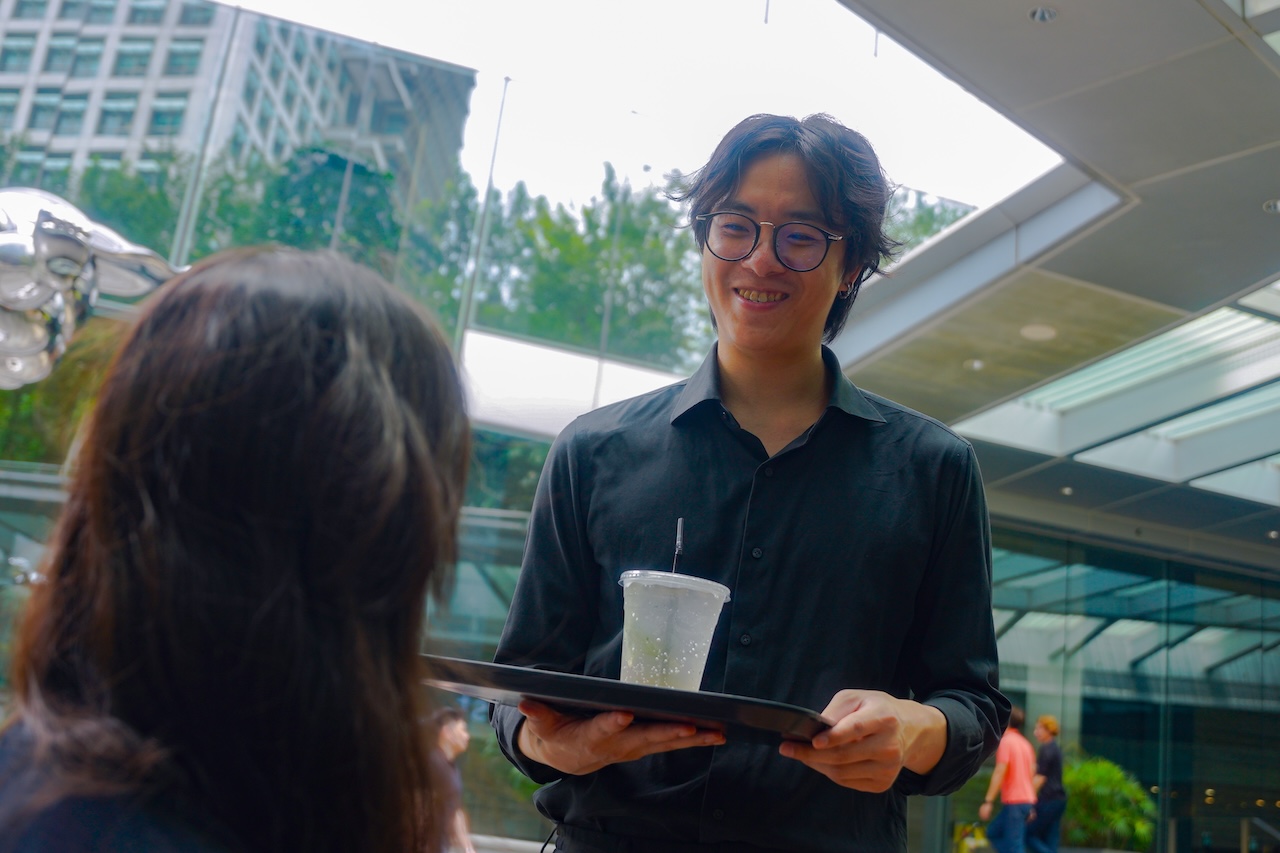All images by Xue Qi Ow Yeong for RICE Media unless stated otherwise.
I have a secret fantasy. Whenever the going gets tough at work—think neverending deadlines, persistent writer’s block, and general anxiety— I’ve contemplated quitting to spend a few quiet months working in a quaint bookstore.
What’s stopping me? Nothing much. Just the fact that this goes against everything I’ve ever been taught about careers and job hunting.
ADVERTISEMENT
Conventional wisdom dictates that you should never quit without securing a spot in greener pastures—a job that’s more prestigious or pays better. Or ideally, both.
But let’s put ambition and career goals aside for a bit. Is it wrong to just want a job that provides you with enough to survive? To be free of the pressures of hitting Key Performance Indicators?
My little bookshop fantasy is loosely considered a bridge job—temporary employment that bridges gaps between longer-term roles. Bridge jobs used to be looked at as a shameful last resort, a way to support yourself while waiting for the next big gig.
But for burnt-out corporate workers, they’ve emerged as an unlikely opportunity—a sabbatical of sorts to recover from the rat race while still earning an income.
With job hopping and quitting without a backup plan becoming more common, especially among Gen Z, bridge jobs have naturally become more normalised—romanticised, even.
Over in the US, one woman’s LinkedIn post announcing she’d secured a barista job to tide her over during her job hunt went viral. Thousands of people commented sharing that they were either doing the same or contemplating it. People envisioned leaving their unsexy desk-bound jobs to go work in a cute little cafe. Or a cute little bar. Or a cute little boutique.
While there aren’t any bridge job-specific statistics locally, we do know that Singaporeans aren’t the exception to the global workforce’s increasing focus on work-life balance. For two years in a row, work-life balance has emerged as jobseekers’ top priority, over salary and benefits, according to Randstad’s Employer Brand Research Singapore report.
The first half of 2024 has also seen a small increase in desire to change jobs (from 30 percent to 35 percent), mainly driven by younger employees aged 34 and younger, and those with high education qualifications.
Taken altogether, the statistics paint a picture of the young, qualified worker who prizes job fulfilment, and isn’t averse to leaving an environment that isn’t serving them well. They’re also privileged enough to take the financial hit. (A 40-year-old sole breadwinner, for example, wouldn’t be able to enjoy the same flexibility.)
We already know Singaporean workers are massively burnt out. But the rise of bridge jobs seems to be about more just temporarily escaping the rat race. They also indicate a shift in how we’re thinking about labour and aspirations today.
Life After Burnout
Up till February this year, Fan, who only wants to be known by his first name, was a project manager at a tech multi-national corporation (MNC). But the 32-year-old decided to quit without a job lined up to take a break from work and focus on his health. For about four months, he worked as a retail associate at a global sports brand while biding his time and looking for new opportunities.
ADVERTISEMENT
Fan was strategic with his bridge job. He knew he’d potentially make more money with a food delivery job, he tells me. But he opted to work retail as he craved some social interaction after spending the bulk of the last few years working from home.
It was also tangentially related to his marketing career. “I wanted to see how my work translates all the way down to the level where we interact with consumers.”
From our schooling years, Singaporeans are thrust into a world of aptitude assessments and projected milestones. Preliminary exam scores tell us what schools to aim for. Income surveys tell us how much we should be making. Fall short and you’re told you’re not maximising your potential.
I guess you could say that the people, like Fan, who opt for bridge jobs are making the intentional choice to leave all those societal expectations behind for a little while. More than a fancy job title, what they seek is fulfilment.
Others seek out bridge jobs because the corporate rise-and-grind mentality becomes too much to bear. Natalie*, who worked in a PR agency, and Ryan Cheong, formerly a scriptwriter at a media company, both describe going through so much stress that they’d fall sick every few weeks. These ailments only let up after they left their jobs.
Natalie, 28, went on to work in a floral studio for six months. Ryan, 29, is still on his bridge job journey, working as a server at a bar, then a casino, then the occasional food pop-up. Yet, if they needed a break, why not enjoy funemployment instead?
For all three, bridge jobs provided financial stability and a much-needed change of scenery while they searched for new opportunities.

Natalie laughs as she tells me that she wasn’t the only one with the same idea. In fact, several of her colleagues at the flower shop were also bridge jobbers.
“I told the florist before, ‘You know, you’re running like a halfway house, right? Like you’re sheltering all of these burnt-out fellas in your little shop.’”
Her reason for applying for the floral assistant job was simple. She liked arranging flowers, and had previously done it on occasions like Mother’s Day and her friend’s wedding.
Rather than staying home all day perusing job sites and waiting for calls, working for their keep in a new, non-corporate environment gave them a refreshing change of pace.
Big Fish in Small Ponds
As much as bridge jobs are romanticised, though, they’re no cake walk.
In Singapore, at least, we tend to define ourselves by our jobs. It can feel strange when you’re unemployed, or suddenly in a completely different field.
As a white-collar worker, stepping into a blue-collar profession can be a downright humbling experience. There might even be shame because we feel like we’ve supposedly ‘downgraded’.
Fan and Ryan tell me that there isn’t anything inherently shameful about their lines of work. It’s the reaction they get from other people that sometimes makes them feel like outliers.
The moment their much younger colleagues find out their age and previous jobs, the most common refrain is: “What are you doing here?”
The unspoken assumption is that with a degree and experience, you’d be remiss not to climb the career ladder.
Ryan, who looks youthful, admits that he tries not to talk about his age. Being in F&B, he’s had to get used to younger chefs and managers talking down to him.
“I don’t reveal my age because I feel like that’s even more embarrassing [than getting scolded].”
Nevertheless, Natalie, Fan, and Ryan all maintain that they aren’t ashamed of their bridge jobs. After all, what might be a temporary stopover for them is someone else’s actual livelihood.
But these bridge jobs are temporary for a reason.
Natalie tells me adamantly: “Bridge jobs are becoming increasingly common. But I would never do this again. Never.”
Even though her part-time floral assistant job was fun, the financial pressure to return to full-time employment was mounting. Comparing hourly rates, she was earning a third of what she commanded at her PR agency. Due to frequent overseas travel for family reasons, her finances were becoming increasingly strained.
Job hunting wasn’t easy. She estimates that she probably sent out around 500 resumes before landing her current PR job.
Fan shares that his retail stint is probably the most physically demanding job he’s had. Going from sitting behind a desk for eight hours a day to pulling twelve-hour shifts on the shop floor was a different challenge.
Bumping into acquaintances and ex-colleagues in the store also proved slightly awkward.
“I had to tell them, ‘Oh yeah, I’m working here temporarily and job-hunting’ to give some context. Because the companies I left were big companies. And the usual intent of leaving the company is to be more successful in the next one.”
Likewise, Natalie tells me that most of the judgment came from people who weren’t close to her. In contrast, all her close friends celebrated when she finally quit her job.
One interaction still stands out, she says. Amid her job hunt, she received a call from a recruiter about an interview at a PR agency. She turned it down right away as she knew that the agency life was not for her.
To her indignation, the recruiter began berating her, telling her that her “value in the market has depreciated” after six months of unemployment. Back then, she was already feeling insecure about her job prospects.
“That kind of fear-mongering is not very productive. And of course, it’s not appreciated.”
Despite the various perks of bridge jobs, Fan, Natalie, and Ryan, are certain that they can’t do this long-term. Nor do they want to. For one, they wouldn’t earn as much. For another, they never wanted to leave the rat race for good.
The intention was always to return and pick up where they left off.
A Detour In The Rat Race
As much as bridge jobs are a growing trend, some employers are still sceptical of these odd job stints.
Some see youngsters who take career breaks as the “strawberry generation”. Perhaps it’s a remnant of our nation-building era, when industriousness was glorified and the Singapore Dream was very much about unrelenting material success.
For many bridge jobbers, though, the seemingly random work they take on can help their careers and personal development.
Ryan, who’s still on the hunt for freelance writing gigs, shares that his F&B experiences in the past few months have made him a better writer.
“As a writer, what’s important is to have a broad breadth of life experience, in a sense, for you to draw from. And these are things I would have never had access to, or no idea how to relate to,” he muses.
Fan, who’s since found a new job working in branding and communications in another large MNC, says his main takeaway is the connections he’s made. Besides some unlikely friendships with some of his younger colleagues, he also forged a bond with the managers his age. They even told him they’d keep a lookout for him if a corporate position opened up, he says.
“It’s quite heartwarming to see that despite being an uncle among teens, I made some real friendships.”
As we discuss their respective bridge job stints, I get the feeling that each bridge jobber almost slips into job interview mode as they expound on the transferable skills they’ve picked up. Not Natalie, though.
A few months back, when she was still deep in her job hunt, she’d dread getting questions about her floral studio stint. Sometimes, the benefits from a bridge job field aren’t tangible, nor are they particularly transferable.
“Why are you asking me how it will benefit your company? I didn’t do it to benefit your company. I did it to benefit me.”
Bridge jobs can also be a good reminder of the importance of slowing down. Ryan candidly shares that he’s taken a step back from his bridge jobs in the last couple of weeks to heal from a breakup—something he’d never be able to do at his old job.
Natalie, too, admits that slowing down was something she had to force herself to do.
“I consider myself a very ambitious, career-driven kind of person. This break was very challenging, mentally. So while I was at the floral studio, it really helped me to take life slow,” she reflects. Being surrounded by other bridge jobbers at the floral studio also helped her feel less alone, she says.
The Future of Work
I have to admit that a large part of why I haven’t embarked on my own bridge job journey yet is simply fear. In my teenage years, I saw firsthand how my dad struggled to find a new job after he was retrenched.
Traditionally, the ideal career trajectory looks like a ladder—each job is supposed to be a step up. If you take your feet off a rung, you might have to start from the bottom again.
In today’s hypercompetitive job market, it can feel terrifying to take a step back. After all, life isn’t a Eat, Pray, Love movie where you always get a happy ending.
We should also consider that one person’s bridge job can be another’s career. Most blue-collar workers, for example, can’t just leave their jobs because they’re feeling stressed or unfulfilled.
But the fact that millennial white-collar workers like Natalie, Fan, and Ryan are willing to take the leap even when they aren’t sure what’s on the other side is a sign that there are people seeing the value in career detours. There’s also a sense that all jobs are respectable. Nobody’s too high and mighty for blue-collar work.
It isn’t just the bridge job trend that points to this cultural shift in Singaporean workplaces. It’s also the increasing normality of job hopping, gig work, and the focus on finding meaning in the workplace. The rise of childless-by-choice couples also means fewer financial sinkholes (aka kids) and more leeway for temporary career instability.
While workers in previous generations might have valued stability and prestige, new-gen workers are more about personal fulfilment. Perhaps this means having a job that pays the bills while having the freedom to live your life.
Some might consider this selfish. But why should someone feel guilty for prioritising their wellbeing?
In the past, staying with one company until retirement was common. Today, with frequent layoffs and AI threatening jobs, company loyalty has lost its appeal. Investing in yourself and your well-being, even if it means stepping away from corporate life, is now the sensible move.
Or, as Natalie puts it: “You don’t have to always go, go, go.”











